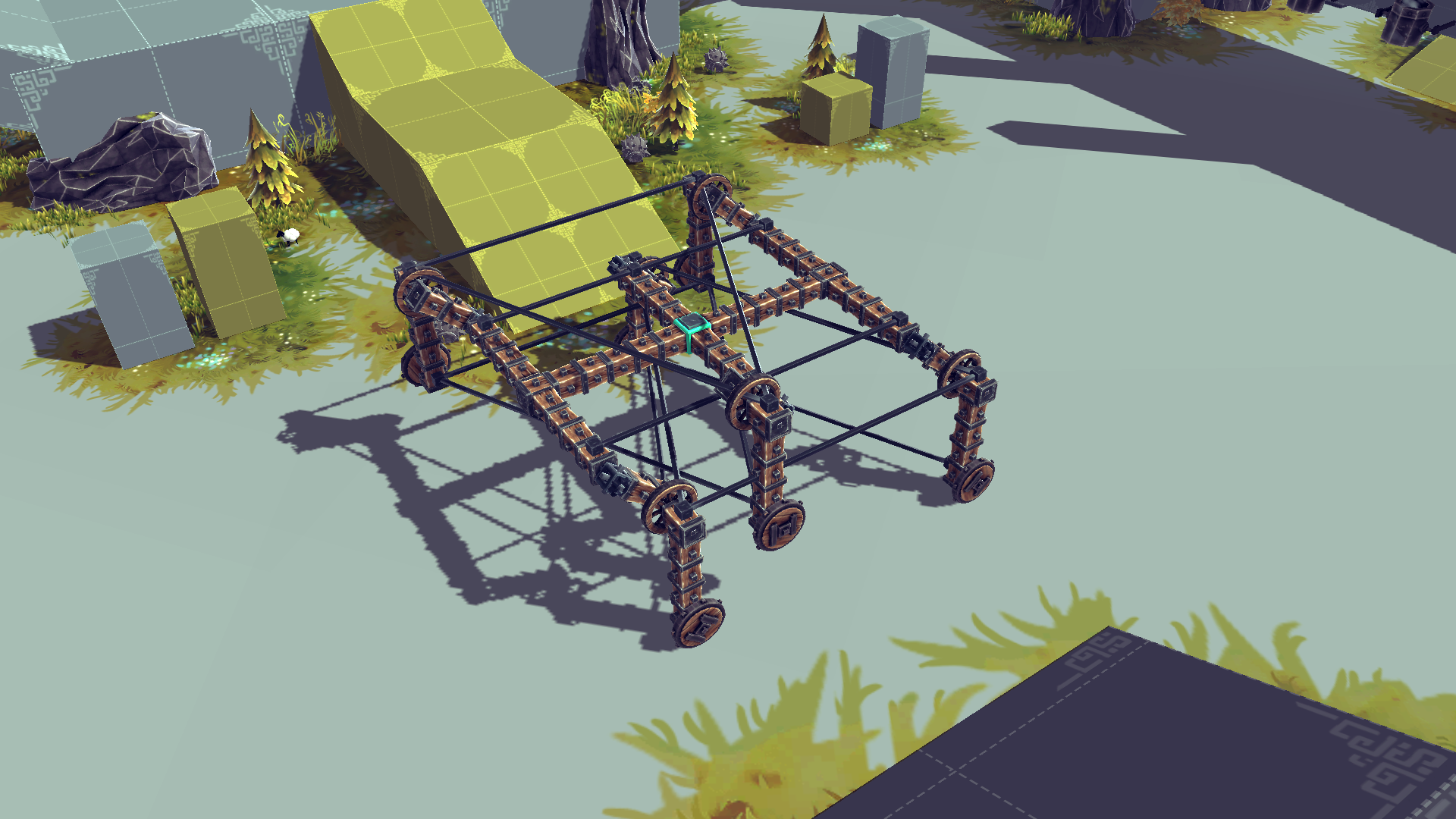Overview
How to build a simple 6 legged walker. The design is very versatile and can be used in many different forms to achieve various goals.
Concept
Basic Concept:
The basic concept is using either wheels or steering blocks to turn legs with a wheel on the end. Dangling from this wheel are the actual feet of the walker.
Construction
Start with a long, 6 legged base shape. It is recommended that 5 spaces be left in between each leg to start.
Next, add the turning mechansim: either steering blocks as shown, wheels, or some other method of rotation. Make sure that the turning mechansims all rotate in the same direction
Place legs onto the turning mechanism, so that the 1st and 3rd leg on one side and the 2nd on the other, face in the same direction, while the other legs face in the opposite direction. At this stage, the walker will partially function.
Place another rotation point at the end of the leg. This rotation point will need to be able to rotate freely, so an unpowered wheel or swivel joint would serve properly. Onto each point, attach block to the bottom section. The lenth of the blocks is not entirely important, but at least 2 blocks is recommended.
Next the legs need to be braced together to prevent the loss of control. Make sure that only the feet of the walker are braced, if the section that rotates is braced, it will break. Also, ensure that only the legs that faced the same direction in the 3rd step are braced together, if any other are braced, it will break. It is also recommended that the initial legs from the 1st step are braced, to add stability.
Additions
The walker is functional, but only moves in a straight line. At this time, i know of only 2 methods to allow for turning:
1. place wheels on the bottom of each leg, with the wheels on one side bound to move forward with the same key that moves the other side backwards
2. Place wheels onto pistons at the front and back. The pistons force the walker onto the wheels, allowing for turning.
Another issue with this walker design is the slow speed, which can be fixed by using wheels on the bottom of each foot to move forward, instead of to turn.
It is possible to leave the middle foot unattached to the base of the walker, if it is securely braced to its complementary legs. This reduced weight, which allows for greater speed. This will, however, cause the walker to move quite shakily.
I have had the best result by using the 2nd steering process and the modifications for speed above. The final result moves quickly, handles well, and looks fairly appealing.
Conclusion
This is a fairly simple concept, that I hope others use and improve upon. Thank you all for reading this guide!
For those of you to lazy to build one yourselves, I have uploaded my personal favorite version of this walker format onto the steam workshop: [link]












